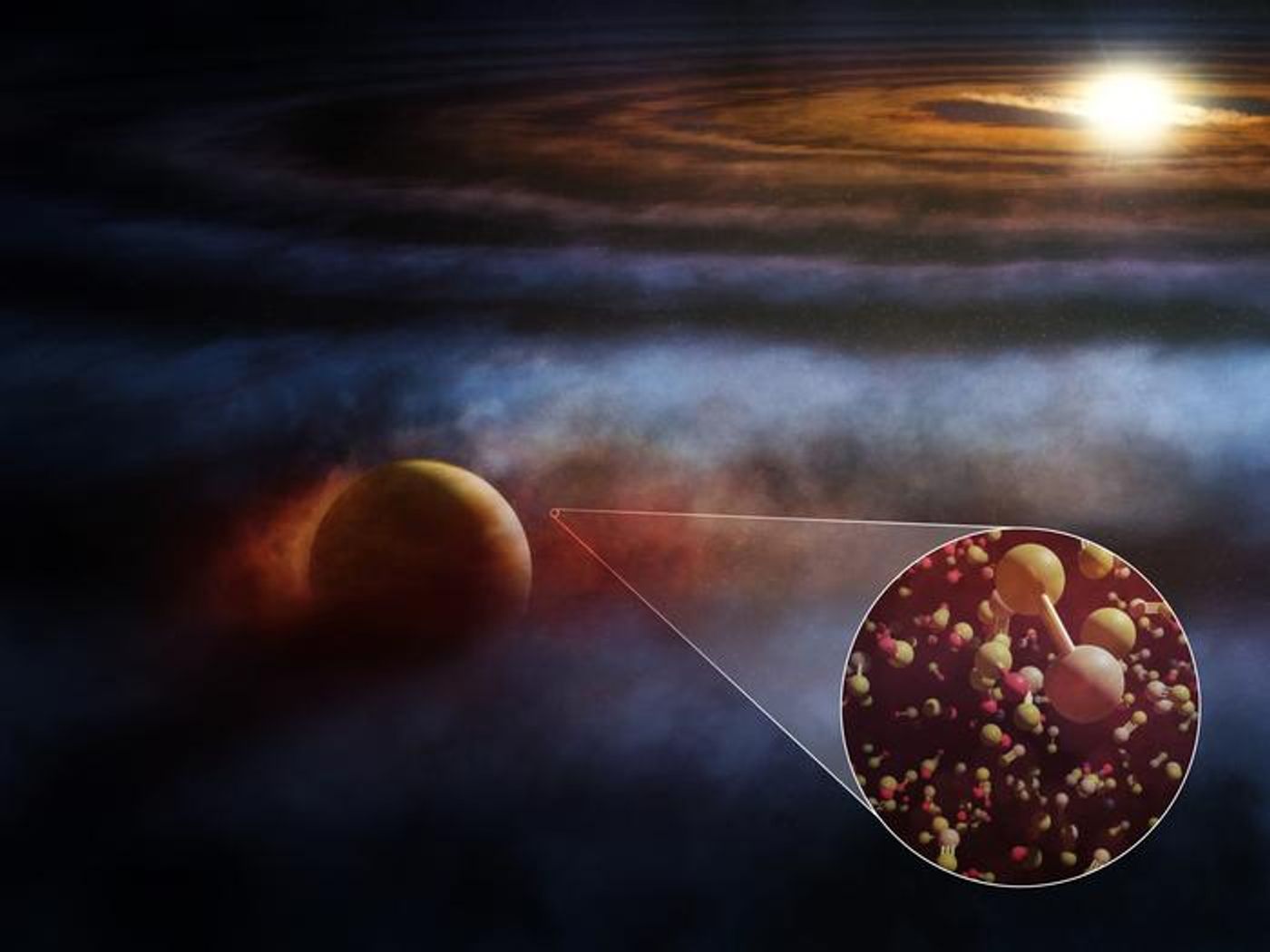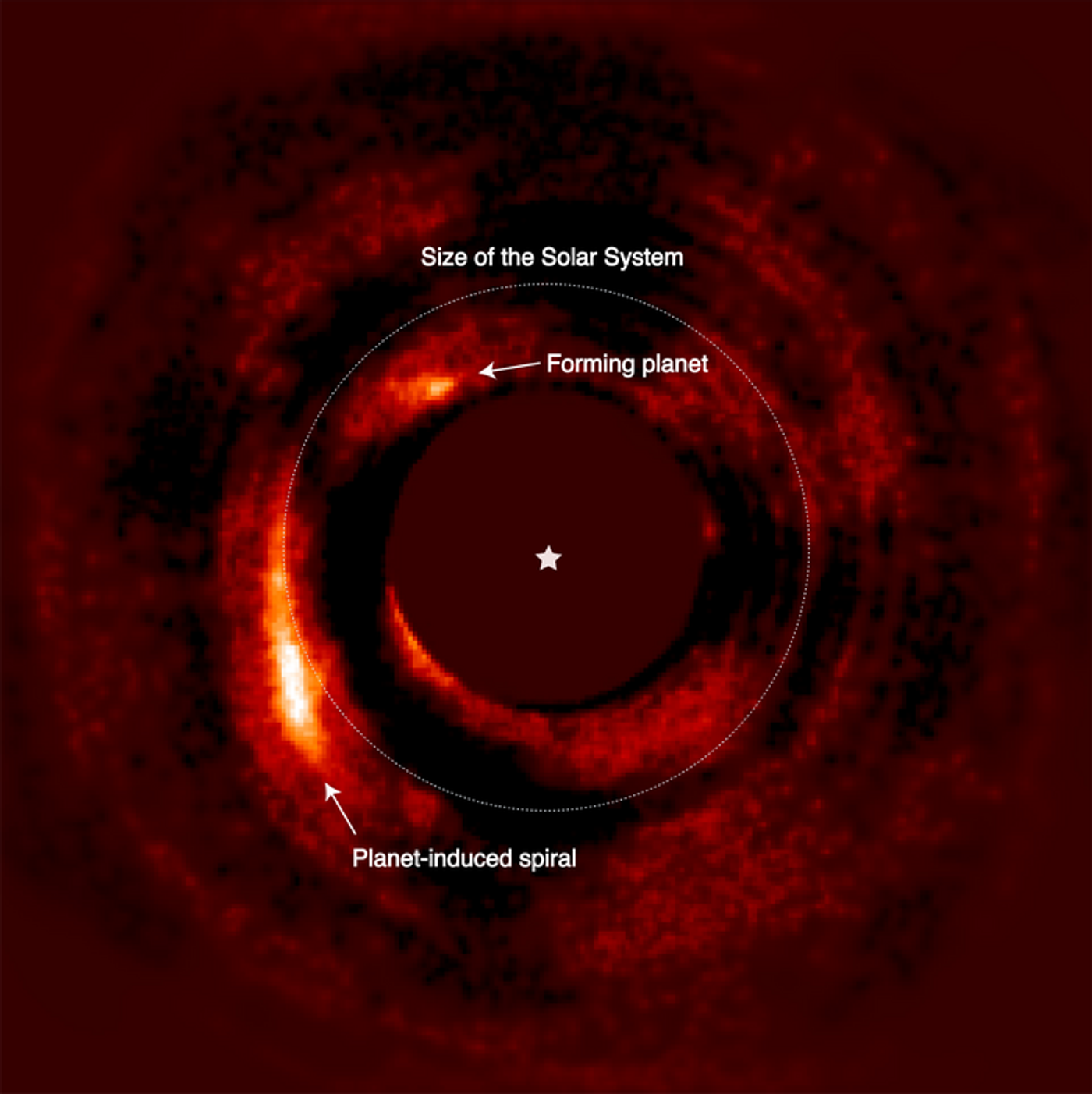A recent study accepted for publication in The Astrophysical Journal Letters discusses how astronomers used the Atacama Large Millimeter/submillimeter Array (ALMA) to examine protoplanet HD 169142 b, which is located approximately 370 light-years from Earth and approximately three times the mass of Jupiter. More specifically, the astronomers focused on the chemical signatures used to identify HD 169142 b, which could initiate a new method in identifying and locating protoplanets, which are very early stages of planetary formation within a star system’s disk of gas and dust.
This study holds the potential to help scientists better understand how to both identify and characterize protoplanets, especially when imaging methods or direct observations aren’t possible methods in finding them.
Artist rendition of protoplanet HD 169142 b and the chemical signatures it produces that were examined in this study. (Credit: ALMA (ESO/NAOJ/NRAO), M. Weiss (NRAO/AUI/NSF))
“When we looked at HD 169142 and its disk at submillimeter wavelengths, we identified several compelling chemical signatures of this recently-confirmed gas giant protoplanet,” said Dr. Charles Law, who is an astronomer at the Center for Astrophysics | Harvard & Smithsonian, and the lead author of the study. “We now have confirmation that we can use chemical signatures to figure out what kinds of planets there might be forming in the disks around young stars.”
The existence of HD 169142 b was confirmed in April of this year, and the goal of this most recent study was to build off that confirmation and determine what steps can be taken going forward to find more protoplanets like it.
Direct image of the HD 169142 system showing the detecting of the forming planet HD 169142 b (around 11 o’clock) that was discovered in Aril 2023. (Credit: V. Chrisitaens / ULiège)
Using ALMA, the researchers for this most recent study successfully detected carbon monoxide (including both 12CO and its isotopologue 13CO), sulfur monoxide (SO), and silicon monosulfide (SiS), the last of which is a first-time detection. This surprised the team as the detection of SiS by ALMA indicates the release of silicates from dust grains caused by high-velocity gas shock waves, which only occurs during giant protoplanet outflows.
“SiS was a molecule that we had never seen before in a protoplanetary disk, let alone in the vicinity of a giant protoplanet,” said Dr. Law. “The detection of SiS emission popped out at us because it means that this protoplanet must be producing powerful shock waves in the surrounding gas.”
The study’s unique findings could open doors to developing more efficient methods for detecting protoplanets in the future, which could also help scientists better understand the formation and evolution of exoplanets throughout the cosmos.
What new discoveries will scientists make about protoplanets in the coming years and decades? Only time will tell, and this is why we science!
Sources: arXiv, European Southern Observatory, NASA, Wikipedia, National Radio Astronomy Observatory, EurekAlert!
As always, keep doing science & keep looking up!







